KRAS In-well Lysis ELISA Kit Overview
Related Products:
- RAS Antibodies: Recombinant antibodies for detecting specific RAS or all RAS isoforms.
- Recombinant RAS Proteins: Recombinant RAS proteins for use in research assays.
The KRAS In-well Lysis ELISA Kit is designed for high throughput quantification of active KRAS in cell lysates via chemiluminescent detection. A GST-fused, Raf-RBD protein, which binds to activated RAS, is first bound to a 96-well glutathione-coated ELISA plate. Cells containing KRAS protein are then lysed in a 96-well cell culture plate before transfer to the Raf-RBD coated ELISA plate. A highly specific human KRAS antibody is then added to detect active KRAS. Addition of a secondary antibody conjugated to horseradish peroxidase (HRP), followed by addition of developing solution provides a sensitive chemiluminescent readout that is easily quantified by luminescence.
KRAS In-well Lysis ELISA Kit Highlights
- Isoform Specific – Highly specific recombinant KRAS antibody detects activated human KRAS without cross reactivity from HRAS or NRAS.
- Fast & HTP Friendly – Excess reagents are provided so they can be used with reagent reservoirs or automated microplate washers.
- Assay Input – Use with 2 x 104 - 16 x 104 seeded cells per well or with 5-50 µg whole cell extract.
KRAS In-well Lysis ELISA Kit Contents
Each KRAS In-well Lysis ELISA Kit is shipped on dry ice and contains reagents requiring multiple storage temperatures. Please confirm receipt of all reagents upon arrival and store items at the appropriate temperatures as indicated below. The kit is guaranteed for 6 months when all components are stored properly.
| Cat No. 52100 | Cat No. 52110 | Storage | |
|---|---|---|---|
| Reactions | 96 | ||
| GST-Raf-RBD | 100 µl | -80°C | |
| Positive Control Extract (AsPC-1) | 40 µl | -80°C | |
| Recombinant KRAS Antibody | 20 µl | -80°C | |
| HRP-conjugated Secondary Antibody | 20 µl | -20°C | |
| Protease Inhibitor Cocktail (PIC) | 2 x 101 µl | 1.2 ml | -20°C |
| 5X Lysis Binding Buffer | 4 ml | 22 ml | 4°C |
| 10X Wash Buffer AM2 | 29 ml | 4°C | |
| 1X Antibody Binding Buffer | 14 ml | 4°C | |
| Chemiluminescent Reagent | 1.9 ml | 4°C | |
| Reaction Buffer | 3.8 ml | 4°C | |
| 96-well assay plate | 1 ea | 4°C | |
| Plate sealer | 4 ea | 4°C |
KRAS In-well Lysis ELISA Kit Data
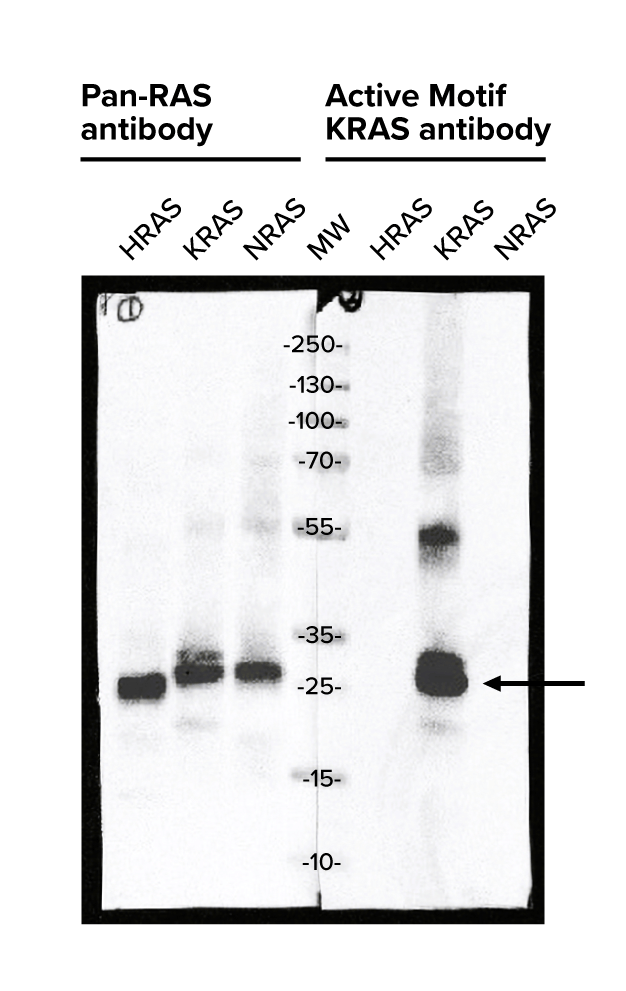
Figure 1: The recombinant KRAS antibody used in the KRAS In-well Lysis ELISA Kit is highly specific for human KRAS.
A western blot compares the detection of recombinant human HRAS, KRAS and NRAS isoforms using a Pan-RAS antibody (ProteinTech, Cat. No. 60309-1-Ig) or the Active Motif recombinant KRAS antibody provided in the KRAS In-well Lysis ELISA Kit. Primary antibodies were used at a concentration of 1 µg/ml. 100 ng each of the following recombinant proteins were loaded: human HRAS (2-186, G12V); human KRAS (2-185, G12C/Q61H); and human NRAS (1-186, WT) (Creative Biomart, cat no. HRAS-228H, cat no. KRAS-457H, cat no. NRAS-447H).
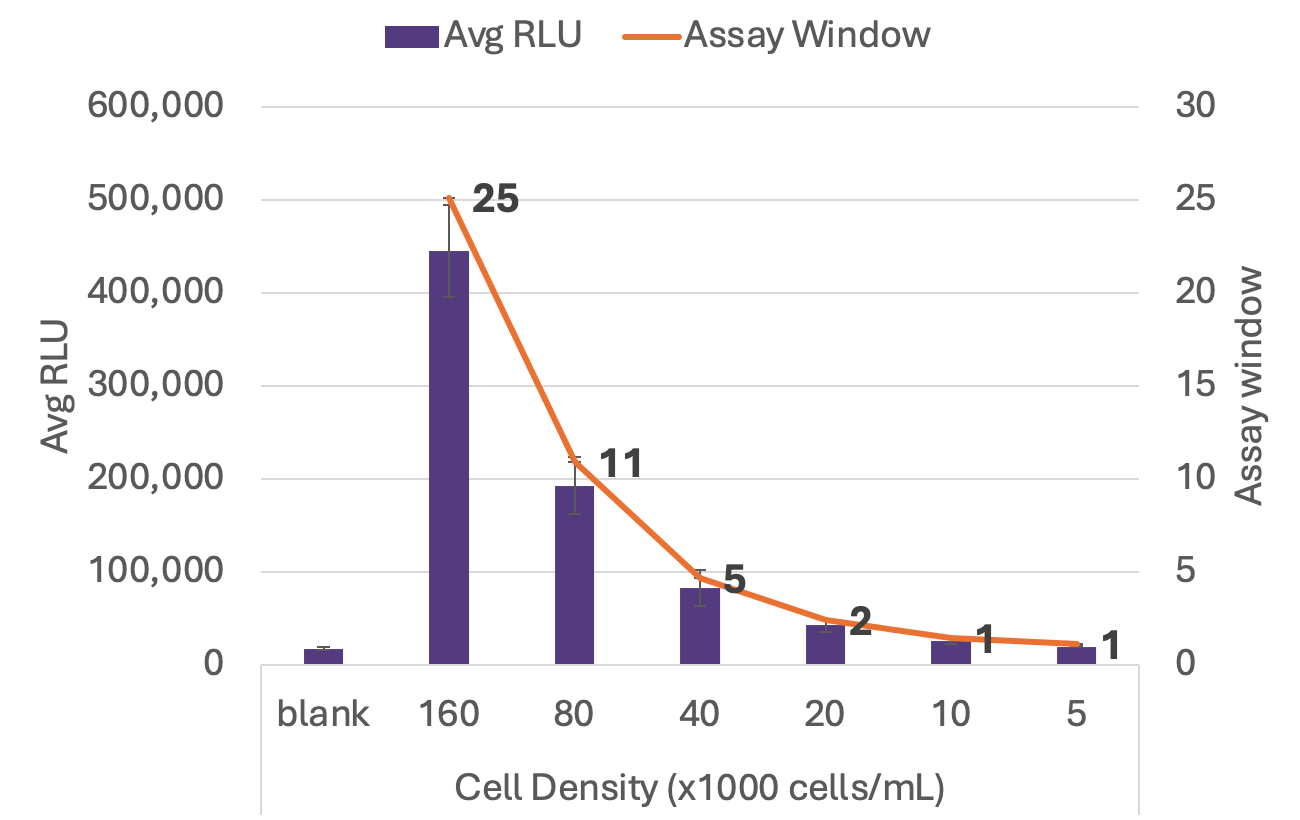 A
A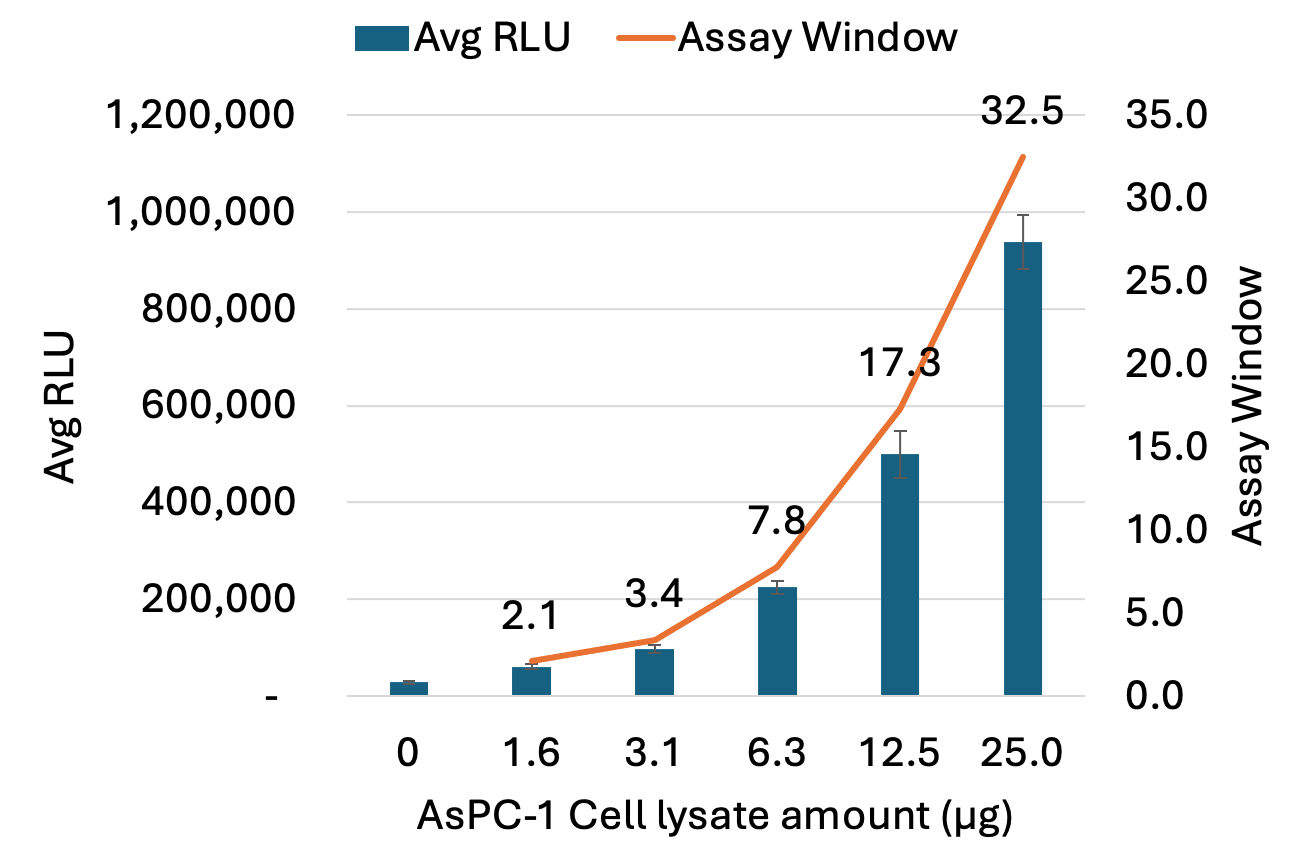 B
BFigure 2: Relative Light Units indicate changing levels of active KRAS in AsPC-1 cells using the KRAS In-well Lysis ELISA protocol.
A: AsPC-1 cells were seeded into a 96 well culture plate using a two-fold dilution series starting with 160,000 cells per well and incubated for 2 days. Media was removed and cells lysed using 1X Complete Lysis Binding Buffer. The KRAS In-well Lysis ELISA protocol was followed, first transferring 50 µl of lysate to each well of the ELISA. Luminescence was read on the CLARIOstar plate reader (ISOGEN Life Science). AsPC-1 cells are derived from a human pancreatic cancer and express the KRAS-G12D mutation.
B: AsPC-1 cells were lysed following the KRAS In-Well Lysis ELISA protocol for preparation of whole-cell extract. Protein was quantified using the Pierce BCA Protein Assay Kit and diluted in 1X Lysis Binding Buffer. 50 µl was added to each well containing the indicated quantity of total protein. RLU is shown on the y-axis while the assay window (signal/background RLU) is indicated above each sample.
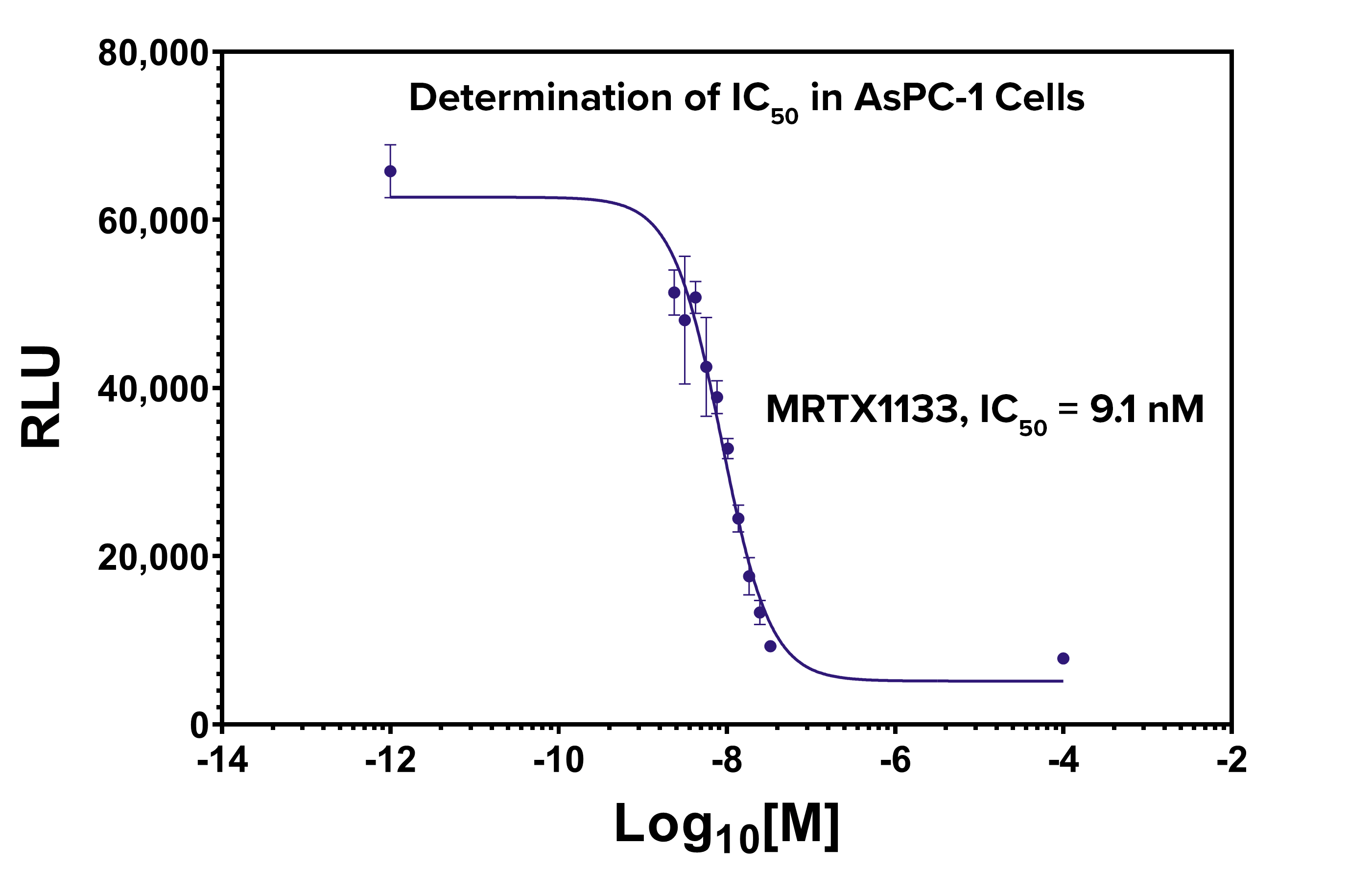
Figure 3: IC50 of MRTX1133 inhibition of active KRAS-G12D in cell lysate from AsPC-1 using the KRAS In-well Lysis ELISA Kit.
3.2 x 105 AsPC-1 cells were seeded in 96 well plates and grown for 48 hours. Cells were treated with MRTX1133 (a selective KRAS-G12D inhibitor, Cayman Chemical) at different concentrations for three hours before use in the KRAS In-well Lysis ELISA Kit protocol, with four replicates each.
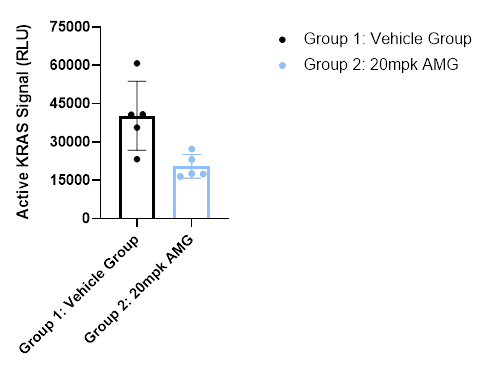
Figure 4: Detection of active KRAS in human tumor samples
Human tumors were harvested, and flash frozen from mice that were treated with either a vehicle or 20 mg/kg of KRAS G12C inhibitor AMG-510. 5-10 mg of tumor samples were powderized using a Covaris Cryo Prep system and then mixed with 200 µl 1X Lysis Binding Buffer. Tumor lysates were centrifuged at 15,000 x g for 10 minutes at 4 °C. The supernatant was transferred to a cryotube and stored at -80 °C. A BCA assay was used to determine protein concentration. 25 µg of tumor lysate was added to each well of the KRAS ELISA plate.
KRAS In-well Lysis ELISA Kit FAQs
Can I use frozen cells as starting material?
For best results, we recommend using fresh material as freeze-thawing the starting material may mask experimental effects. If a frozen sample is the only option, we recommend thawing and performing the homogenization step in the Complete Lysis Buffer. Whole cell extracts may be aliquoted and stored at -80°C. Avoid freeze/thaw cycles.
Does the KRAS antibody detect mutant forms of KRAS?
The recombinant KRAS antibody has been tested in the KRAS In-well Lysis ELISA using cell lysates from the AsPC-1 cell line, a pancreatic cancer line expressing the KRAS G12D mutant protein. The recombinant KRAS antibody was also tested and detected the recombinant KRAS G12C, Q61H mutant protein in Western blot. It is expected that it will work with all common active KRAS mutant proteins. However, not all mutations have been tested in the ELISA.
What controls can be used with the kit?
AsPC-1 cell extract is provided as a positive control for KRAS activation in the kit. Sufficient extract is supplied for 4 reactions per 96-well plate. This extract is optimized to give a strong signal (>10x assay window) when used with 10 µl/well.
KRAS In-well Lysis ELISA Kit Documents
You might also be interested in:
| Name | Format | Cat No. | Price | |
|---|---|---|---|---|
| KRAS In-well Lysis ELISA Kit | 1 x 96 rxns | 52100 | ¥13,980 | Add to Cart |
| 5X Lysis Binding Buffer | 20 ml | 52110 | ¥5,200 | Add to Cart |



